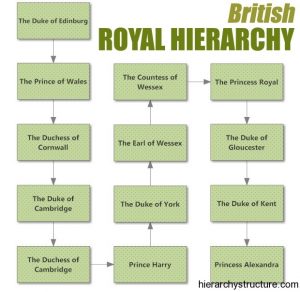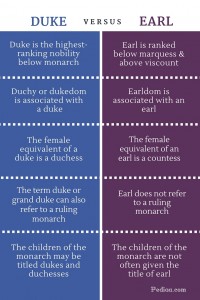Decoding British Nobility: Earl Vs. Lord – What's The Difference?
The fascinating world of British nobility, with its ancient titles and intricate hierarchy, can often feel like a labyrinth to the uninitiated. Among the many terms that pop up, "Earl" and "Lord" are two that frequently cause confusion. Are they interchangeable? Is one more important than the other? While both terms refer to members of the peerage, the class of nobles in the United Kingdom, they hold distinct meanings, ranks, and historical significance.
This article aims to unravel the mystery behind these two venerable titles, shedding light on their specific roles, their place within the British peerage system, and how they've evolved over centuries. By the end, you'll have a clear understanding of what sets an Earl apart from a Lord, and vice-versa.
Understanding the British Peerage System
Before diving into the specifics of Earl and Lord, it's essential to grasp the foundational structure of the British peerage. The peerage is a system of hereditary titles, granted by the monarch, that confers certain privileges and, historically, political power. It's a rigid hierarchy, with five distinct ranks for men, and corresponding titles for women (though inheritance patterns have historically favored males):
- Duke/Duchess: The highest rank in the peerage.
- Marquess/Marchioness: Ranked below a Duke and above an Earl.
- Earl/Countess: The third rank, below a Marquess and above a Viscount.
- Viscount/Viscountess: Ranked below an Earl and above a Baron.
- Baron/Baroness: The lowest rank of the peerage.
Understanding this ladder is crucial, as it immediately places the Earl within a specific, elevated position, while "Lord" often serves as a broader, more versatile term that can apply to several ranks within this very system.
The Illustrious Title of Earl
What is an Earl?
An Earl is a specific, high-ranking title within the British peerage, holding the third position, directly below a Marquess and above a Viscount. It is one of the oldest and most historically significant titles in the English peerage, predating the Norman Conquest of 1066. The term "Earl" itself has Norse origins, akin to the European "Count" (which is why the wife of an Earl is called a Countess).
Unlike some other titles, the rank of Earl has a deep historical connection to territorial governance. An Earl traditionally held significant power and influence over a specific region, known as an "earldom." This was not merely an honorary title; it came with tangible responsibilities and authority.
An Earl is formally addressed as "My Lord" and is referred to as "The Right Honourable." While the title has historically been inherited by males, there are instances where it can pass to females, making them a Countess in their own right, depending on the specific letters patent creating the peerage. A notable modern example of this title's enduring relevance is Queen Elizabeth's youngest son, Prince Edward, who chose the title of Earl of Wessex upon his marriage in 1999, breaking with the tradition of receiving a Dukedom.
The Historical Significance of Earls
Historically, Earls were far more than just landowners with fancy titles. They served as powerful figures, often acting as governors or viceroys on behalf of the monarch. Their duties were extensive and vital to the functioning of the kingdom. They were responsible for:
- Ruling in the King's Name: Exercising royal authority in their designated territories.
- Keeping the Peace: Maintaining law and order within their earldoms.
- Dispensing Justice: Overseeing local courts and ensuring fair judgments.
- Raising Armies: Mobilizing forces for the king in times of war or rebellion.
This deep historical connection to territorial governance and military leadership meant that Earls were pillars of medieval English society. Their power was directly tied to their landholdings and their ability to command resources and loyalty within their specific regions. While the political power of Earls has diminished significantly over centuries, their title continues to signify a specific, ancient, and high rank within the peerage.
The Broad Term: Lord
What Does "Lord" Signify?
In contrast to the specific title of Earl, "Lord" is a much broader and more versatile term within the British aristocratic landscape. It signifies someone with power or influence, whether through noble birth, a grant from the Crown, or an office they hold. Crucially, "Lord" can function in several ways:
- As a General Form of Address: All male members of the peerage, from Dukes down to Barons, can be addressed as "My Lord." This means that while an Earl is indeed a "Lord," so too is a Viscount or a Baron. Even a Duke, though he holds a higher rank, can be informally referred to as "Lord [Surname]."
- As a Specific Title for Barons: The lowest rank of the peerage is Baron, and a Baron is typically referred to as "Lord [Surname]" (e.g., Lord Smith).
- As a Courtesy Title: The eldest sons of Dukes and Marquesses often use one of their father's lesser titles as a courtesy title, which can be a "Lord" title.
- As a Term for Office Holders: Certain non-hereditary positions, particularly in government or the judiciary, carry the prefix "Lord" (e.g., Lord Chief Justice, Lord Mayor). These individuals may not be hereditary peers at all.
- As a Historical Term for Landowners: Historically, "Lord" could refer to a "Lord of the Manor," someone who held feudal rights over a specific estate, regardless of their peerage status.
This versatility means that while an Earl is always a Lord (in the sense of being addressed as "My Lord"), a "Lord" is not necessarily an Earl. He could be a Baron, a Viscount, or even someone holding a non-hereditary office.
Lord's Broader Scope
While an Earl's authority was specifically tied to an "earldom," the term "Lord" often represented a broader geographic or political authority. Historically, Lords generally held larger or more significant regions compared to Earls, or sometimes even owned multiple territories. The distinction between Lord and Earl often involved their jurisdictional scope, with Lords sometimes owning multiple territories, whereas Earls typically oversee a particular earldom.
Furthermore, "Lord" is a more adaptable term in terms of formality. While "Earl" is typically associated with a more formal or archaic tone due to its specific historical significance, "Lord" is a more versatile term that can be used in different formality levels, from formal address to general reference for a nobleman.
Earl vs. Lord: Key Distinctions Summarized
To crystallize the differences between these two terms, here's a concise summary:
- Rank in Peerage:
- Earl: A specific, high-ranking title, holding the third position in the British peerage (below Marquess, above Viscount).
- Lord: Not a specific rank itself, but a general form of address for male peers (including Dukes, Marquesses, Earls, Viscounts, and Barons). It is also the common way to refer to a Baron, the lowest rank of the peerage.
- Specificity vs. Versatility:
- Earl: A precise, formal title with a defined place in the hierarchy.
- Lord: A broader, more versatile term that can refer to various ranks within the peerage, courtesy titles, or even non-hereditary office holders.
- Historical Role & Territorial Scope:
- Earl: Historically tied to specific territorial governance over an "earldom," acting as a viceroy or governor.
- Lord: Often encompassed broader geographic or political authority, potentially overseeing multiple territories or larger regions.
- Formal Address & Style:
- Earl: Is styled "My Lord" and is "The Right Honourable." The eldest son bears his father's "second title."
- Lord: Viscounts and Barons are formally addressed as "Lord" or "My Lord." It's a common address for any male peer.
- Age of Title:
- Earl: The oldest form of peerage, dating back to pre-Norman times.
- Lord: A more general term with historical usage that predates formal peerage ranks but doesn't denote a single, specific ancient title in the same way Earl does.
In essence, while every Earl is indeed a "Lord" (in terms of being addressed as such), not every "Lord" is an Earl. The term "Lord" is an umbrella term that encompasses various noble ranks and positions of influence, whereas "Earl" pinpoints a very specific, historically significant, and high-ranking position within the British aristocracy.
The distinction between an Earl and a Lord, therefore, lies in specificity of rank, historical responsibility, and the breadth of usage. An Earl is a particular type of nobleman, holding a specific, elevated position in the peerage hierarchy, deeply rooted in territorial governance. A Lord, on the other hand, is a more general designation that can apply to various members of the peerage, including those of lower ranks, or even individuals holding positions of authority outside the hereditary peerage. Understanding this nuance provides a clearer lens through which to appreciate the intricate tapestry of British nobility.
Regency History: A Regency History guide to dukes, marquesses and other

The British Royal Hierarchy | British royal tree

Difference Between Duke and Earl | Monarch, Titles, Ranks of the peerage,